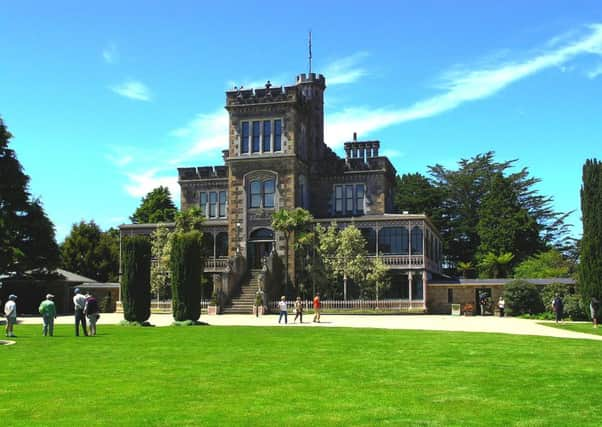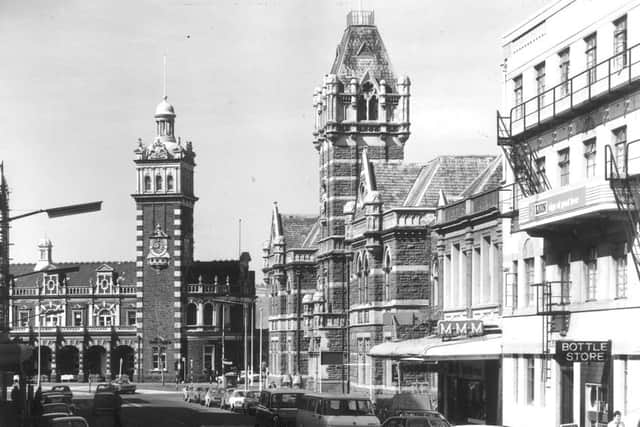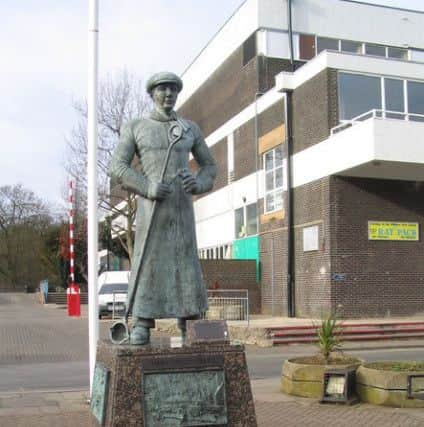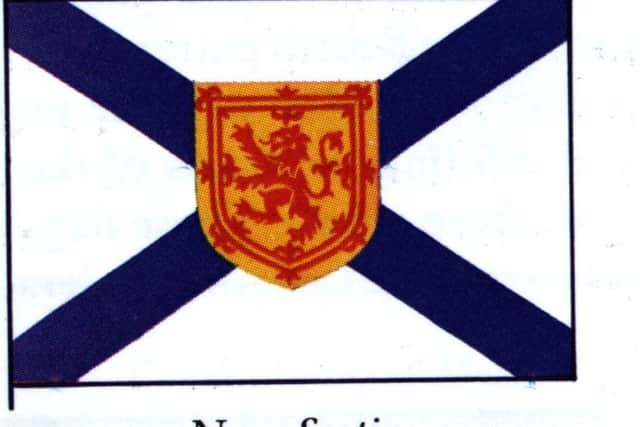5 places around the world that consider themselves Scottish


Descendants of Scots still proudly champion the country’s tradition and ceremony, with bagpipes, tartan and Scottish food on the menu.
From England to New Zealand, we take a look at the history behind five places that have strong ties to Scottish history.
Gurro, Italy


Advertisement
Hide AdAdvertisement
Hide AdBagpipes, kilts and strong local dialects shape the culture of the 200 inhabitants of Gurro, an Italian village in the Italian region of Piedmont.
Found in the stunning Italian Alps, the village is populated by descendants of Scottish soldiers.
According to legend, the Scottish soldiers arrived in the village after fleeing the Battle of Pavia in 1526.
It is said that severe blizzards forced many of them to end their travels and to settle there in the hills.


To this day, Gurro has maintained its strong links to Scotland.
Many residents make regular trips to Scotland and a Scottish Association Bar serves as a welcome centre.
Bagpipes are a popular choice of instrument for locals, who also have a strong dialect, some of the surnames are Italianised forms of Scottish names, such as Donalidi for MacDonal.


Eibar, Spain
Advertisement
Hide AdAdvertisement
Hide AdIn Northern Spain, football club SD Eibar can be found in Spain’s Basque country.
Rolling green hillsides and trickling streams surround the team’s home ground, but the club’s Scottish association goes deeper than that.
The Scottish connection stems from the 1980s when fans watched the Five Nations and were said to fall in love with the Scottish fan spirit.


In 2011, the Eskozia La Brava fan group was formed (the club’s largest fan group) whose name translates to Scotland The Brave.
The East Stand of the football club’s stadium has a Scotland The Brave mural painted on its wall, complete with a Saltire.
The team also have a piper to march them onto the stadium.
Trips to the group’s spiritual home have since followed to take in matches at the likes of Hampden Park, Easter Road, Tynecastle, Ibrox and Celtic Park, usually before pints at their favourite pub, The Horseshoe Bar.
Speaking to The Scotsman recently, Joseba Combarro, president of Eibar’s Eskozia La Brava (Scotland the Brave) supporters group, said: “We were so impressed with how the Scottish fans supported their team no matter what. The Scottish identity connects with the philosophy of Eibar.”
Advertisement
Hide AdAdvertisement
Hide AdJust like the Scots, Eibar’s fans had become accustomed to supporting a losing team before promotion to the top tier. Hailing from a town of under 28,000 people, attracting modest home crowds of 3,000, Eibar are maybe even Spain’s smallest club, given that no club in the country’s league pyramid can claim to come from a smaller town.


Corby, England
Forget that old north-south divide between Scotland and England. There is at least one English town that can lay claim to being even more Scottish than many places north of the border.
Thanks to an influx of steelworkers in the 1930s, the Northamptonshire town of Corby attracted so many Scots it was dubbed “Little Scotland”. And even today, a quarter of a century after the collapse of the local steel industry, around 13 per cent of the population of 61,000 is said to be Scottish or of Scottish descent. Many residents still speak with Scottish accents, celebrate Burns Night and Hogmanay at their local social club and even send their children to Highland dancing classes.
Outside market traders dispense cans of Irn-Bru and bags of tablet to punters clad in Celtic tops, while at the local butchers the customers are better fed on haggis and steak pie, white pudding and butteries.
The rather unlikely association between this small English town and Scotland began when the Glasgow-based company Stewarts and Lloyds acquired the Corby ironstone works in 1920. Twelve years later, the company revealed it was to build an iron, steel and tube-making plant, which would become the most sophisticated and technologically advanced integrated steel plant in England.
At the same time, a downturn in the steel industry in Scotland’s Clyde Valley led to a huge influx of unemployed men and their families to Corby, and many of them made the arduous 325-mile journey on foot.
The small town’s population quickly swelled from around 1500 in 1931 to more than 18,000 in 1950, when Corby was officially designated a New Town. Workers had come from all over the UK, including large numbers of Welsh and Irish, but the Scots were the biggest group of incomers by far. Some 4,000 Scots were in Corby by 1939, at the outbreak of the Second World War.
Advertisement
Hide AdAdvertisement
Hide AdScots soon had an influence on Corby’s culture, and sought to keep their traditions alive, using the Corby Welfare Club as a base. In 1963, Bill Brown, a former soldier from the Gordon Highlanders, and his friends established the Aberdeen and North East Counties Association, and this led to the birth of the Grampian Club, which is still going strong today.
The same cannot be said for the industry that made Corby a boomtown. The steel works was closed by British Steel in 1980, leaving 8500 people redundant. Remarkably, the town has survived this potentially fatal blow, and has attracted new employers including factories producing cereal and snack foods.
Scottish culture also survives. The town has a large number of followers of Scottish football, boasting the largest Rangers supporters club outside of Glasgow, and the Grampian Club is still the focal point for all things Scottish.
Dunedin, New Zealand
New Zealand’s Dunedin owes its roots, as well as its name to Scotland.
Founded in 1848, the settlement on the south-east coast of South Island was named from the Gaelic for Edinburgh - Dùn Èideann.
The first European settlers were members of Lay Association of the Free Church of Scotland, who were led by Edinburgh-born Captain William Cargill and the Reverend Thomas Burns, a nephew of poet Robert Burns.
Surveyor Charles Kettle was told to replicate the building style of Scotland’s capital, and this was done, even down to the naming of streets such as George Street and Princes Street, where a monument to Captain Cargill stands today.
Advertisement
Hide AdAdvertisement
Hide AdNestled in tree-clad hills at the head of a spectacular harbour, Dunedin is the main centre of, and the gateway to, the Otago region.
The university city has a population of around 123,000, with around 25,000 students.
The Scottish roots of the city are obvious in the names of some of the city’s suburbs – Waverley, Leith Valley, Corstorphine, Musselburgh and Portobello.
Dunedin claims Baldwin Street as the steepest street in the world, while Otago Girls’ High School was one of the first state-run secondary schools for girls in the world.
The University of Otago, New Zealand’s oldest university was the first in the country to admit women to all its classes. It is also the South Island’s largest employer.
The city is also home to New Zealand Sports Hall of Fame and has a number of international standard venues for sports including the Caledonian Ground for football and athletics .
Rugby union team the Otago Highlanders are based in the city and are due to play home games at the Forsyth Barr Stadium in the coming season, and the Ice Stadium has the biggest curling rink in the southern hemisphere.
Nova Scotia, Canada
Advertisement
Hide AdAdvertisement
Hide AdSince the arrival of the first wave of settlers in 1622, Nova Scotians have maintained their Scottish roots.
The first Scots were met by a wall of dense forest, the settlers, many of them lacking the practical skills needed to build a successful colony, needed to clear the land before they could begin building shelters.
They had a terrible first winter, there homes were poorly protected against the bitter cold and they were plagued by disease and scurvy.
Thirty of the original settlers died before their first spring.
After war with France made the colony impossible to maintain, many Scots returned home or moved south to New England, it was nearly 100 years before a Scots settlement was re-established in Nova Scotia.
In 1773, a Scottish passenger ship called ‘Hector’ arrived at Pictou, Nova Scotia, carrying 170 Highlanders and 10 men from Greenock.
Most of these immigrants were Gaelic speakers.
When they arrived they began to build shelters against the winter, but supplies they had been promised never came and for a second time, a Scottish colony was forced to endure a desperate winter on the shores of Nova Scotia.
Advertisement
Hide AdAdvertisement
Hide AdThis time the settlers stayed, and once a Gaelic-speaking colony was established, entire Highland villages began arriving.
Around 15,000 Scots, most from the Highlands and Islands, came to Canada between 1770 and 1815.
Gaelic became the third most common European language spoken in Canada.
The Scots boat builders who settled in Nova Scotia developed fishing, farming and shipwright traditions that endure today.
The Gaelic language and traditional music still flourish in Nova Scotia and Cape Breton.
